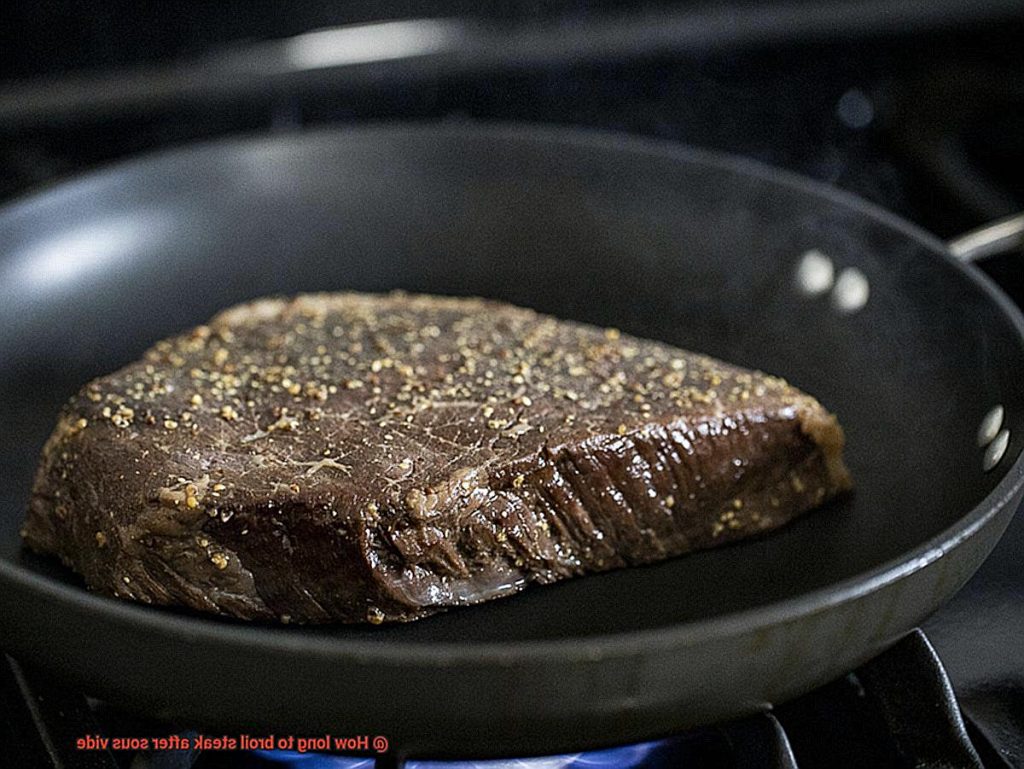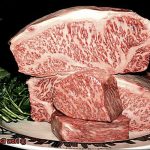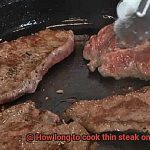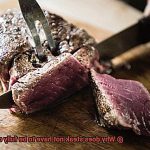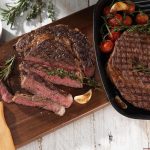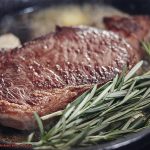Who doesn’t love a perfectly cooked steak?
It’s the ultimate indulgence that can make any meal feel special. However, achieving that perfect cook can be an elusive feat, with countless debates among chefs, home cooks, and meat lovers alike.
Fortunately, modern cooking techniques such as sous vide have made the process a little easier by allowing you to cook your steak to the exact temperature you desire without worrying about over or undercooking it. But what about that all-important sear?
Enter broiling. Broiling is an excellent option for finishing off sous vide steaks, but how long should you broil them for?
Well, it’s not a one-size-fits-all answer as there are several factors to consider. In this post, we’ll delve into the nitty-gritty of how to broil steak after sous vide.
So stick around and get ready to impress your dinner guests with mouth-watering steaks cooked to perfection.
Contents
What is Sous Vide?
Enter sous vide, a culinary sensation that is changing the game of cooking.
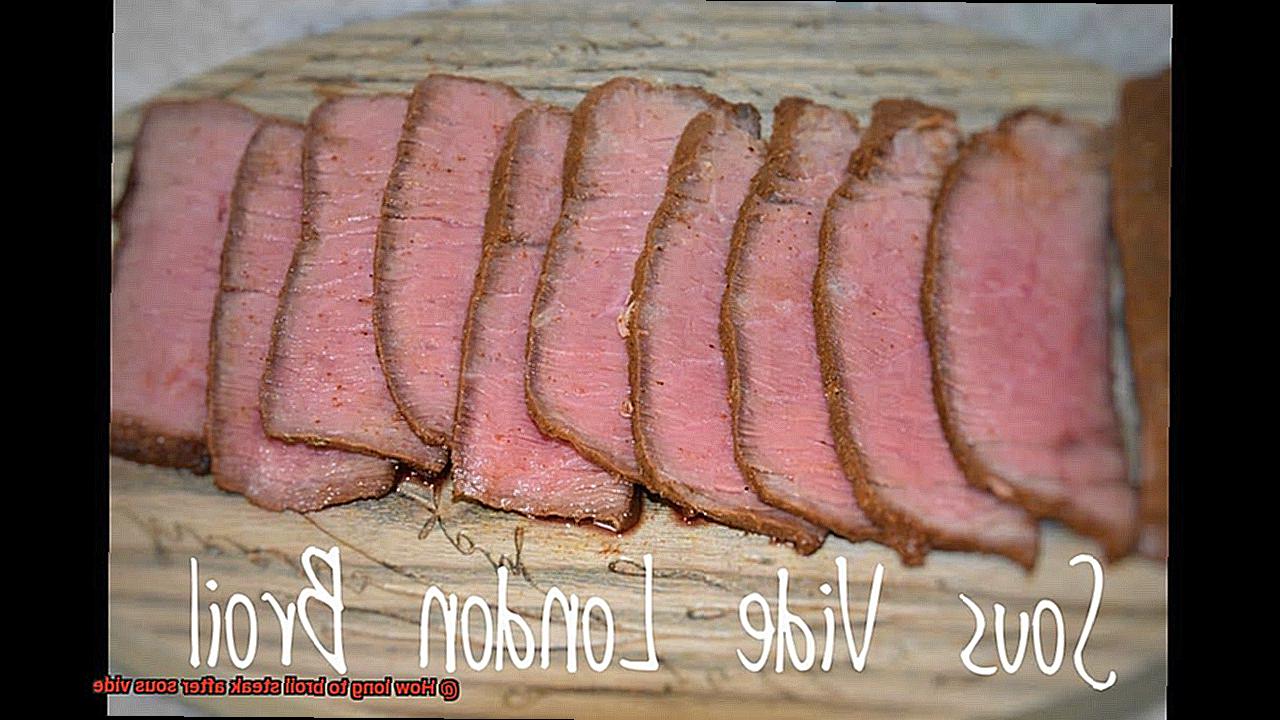
Sous vide, meaning “under vacuum” in French, is a cooking method that involves sealing food in a plastic bag and immersing it in a precisely controlled water bath. This technique ensures that your food is cooked evenly and retains its natural juices and flavors. With sous vide, the risk of overcooking or undercooking your food becomes a thing of the past.
Sous vide is versatile and can be used to cook various foods such as meat, fish, vegetables, and eggs. However, it has become particularly popular for cooking steak because it allows you to achieve the perfect level of doneness without any guesswork. After cooking sous vide, many people finish off their steak by searing it on a hot grill or in a skillet. This not only adds flavor but also creates an appealing crust on the outside of the meat.
The length of time required to broil your steak after sous vide varies depending on several factors such as the thickness of the steak, the temperature at which it was cooked sous vide, and personal preferences for doneness. As a rule of thumb, it’s recommended to broil the steak for around 2-3 minutes per side for medium-rare to medium doneness. However, keep a close eye on your steak while broiling as cooking times can vary depending on factors like altitude and broiler intensity.
To ensure a perfect sear, pat your steak dry with paper towels before broiling it and brush it with a small amount of oil or clarified butter. This will help promote browning and prevent sticking to the broiler pan or grill grates.
In conclusion, sous vide is a precise and reliable cooking method that guarantees consistent and delicious results every time. Whether you are a professional chef or a home cook, it’s worth considering using sous vide to elevate your cooking game.
Why Broil Steak After Sous Vide?
If you’re already familiar with sous vide cooking, you know it’s a great way to get a perfectly cooked steak every time. But hold on, because there’s one more step you need to take to achieve the ultimate flavor and texture. That’s right, broiling your steak after sous vide is essential for creating that mouth-watering crust and tender interior that will make your taste buds sing.
Broiling your steak after sous vide has become a favorite technique among chefs and home cooks alike. It helps to create a Maillard reaction on the surface of the meat, resulting in a delicious crust that enhances its overall flavor and texture. This reaction occurs when heat is applied to the surface of the steak, causing amino acids and sugars to react and form new flavor compounds that give the steak its characteristic browned color and caramelized flavor.
But why broil instead of using a different cooking method? Well, broiling is quick and effective, so you won’t risk overcooking the meat. It also helps to remove any excess moisture on the surface of the steak that may have accumulated during the sous vide cooking process. This moisture can prevent a crust from forming and may result in a less desirable texture.
To achieve the best results when broiling your steak after sous vide, it’s crucial to monitor the cooking time carefully. Depending on the thickness of the steak, its starting temperature, and the broiler’s heat intensity, the length of time required will vary. Overcooking can undo all the benefits gained from sous vide cooking, so don’t let that happen.
In conclusion, broiling steak after sous vide is an essential step in creating a delicious, flavorful, and perfectly cooked steak. It helps to create a Maillard reaction on the surface of the meat, resulting in a tender interior and a caramelized crust that enhances its overall flavor and texture. So next time you cook your steak sous vide, don’t forget to broil it for that extra layer of flavor and texture.
Factors Affecting Broiling Time
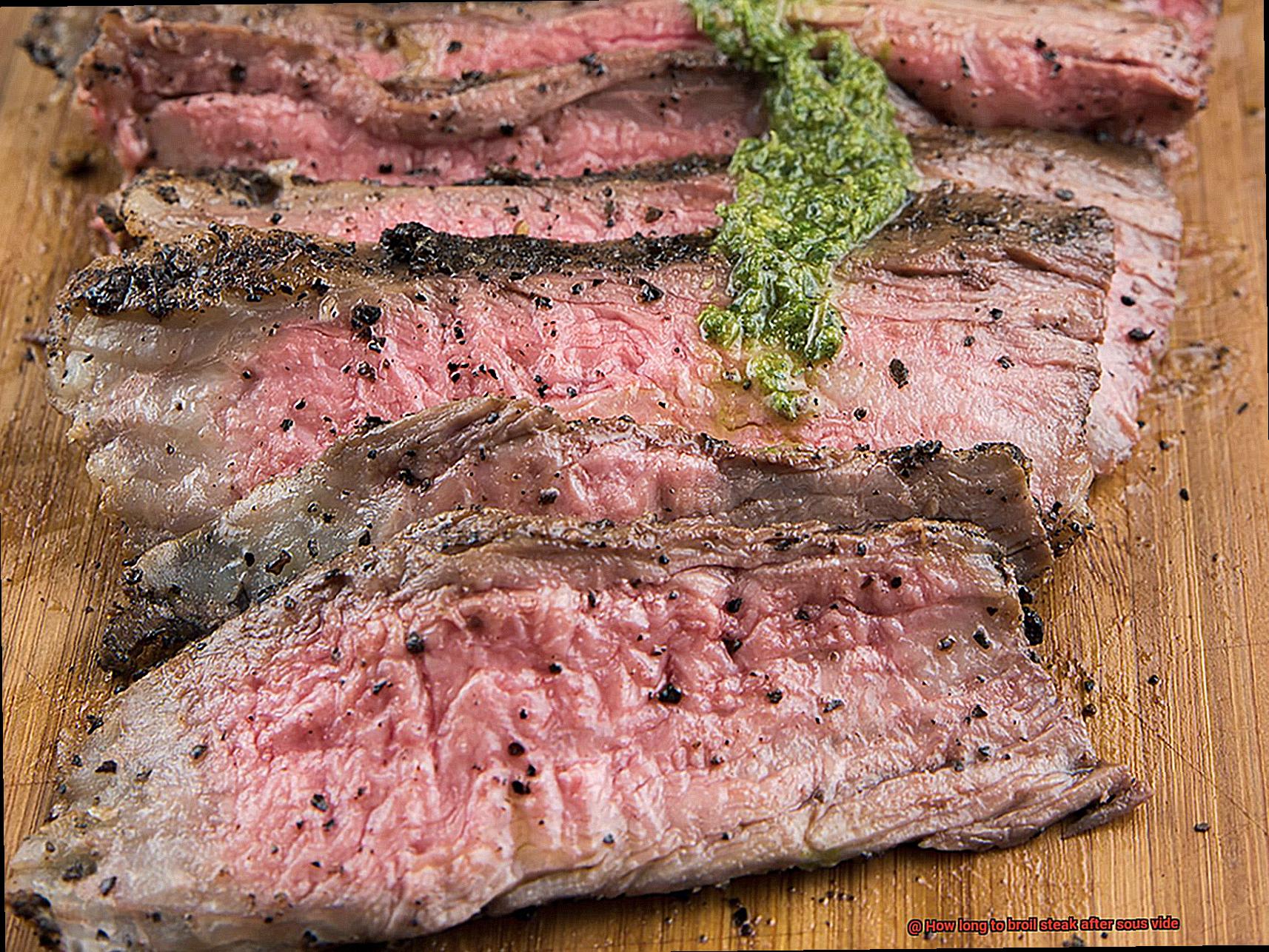
It’s important to keep in mind that several factors can affect the broiling time of your steak.
One of the most significant factors is the thickness of the steak. Thicker steaks require more time under the broiler compared to thinner steaks. This is because the heat needs to penetrate deeper into the meat for proper cooking. So, if you have a thick cut of meat, be prepared to give it more time under the broiler.
Your desired level of doneness also plays a crucial role in determining how long your steak needs to be broiled. For instance, if you prefer a rare steak, you’ll need less broiling time than someone who loves their steak well-done. As you broil your steak for longer periods, it will become more well-done.
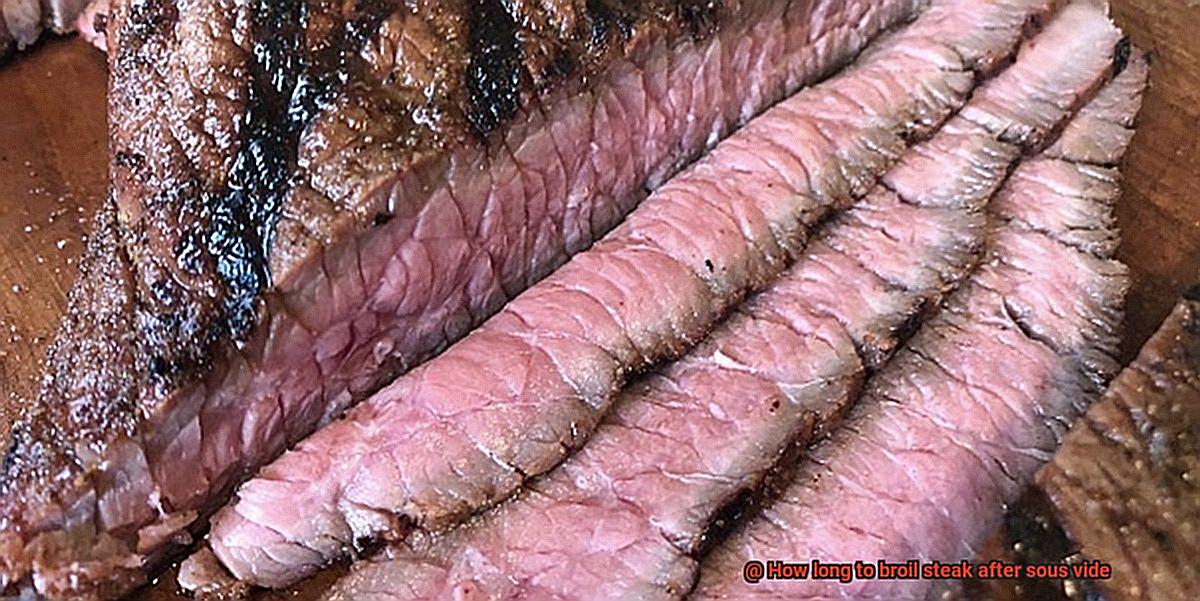
The temperature of the steak when it comes out of the sous vide bath is also an important factor. If your steak is still cold, it will need more time under the broiler to reach your preferred doneness level. Conversely, a room temperature or slightly warm steak will require less broiling time.
Lastly, different types of broilers can affect broiling time as well. Some broilers are more powerful than others and can cook your steak faster. Be sure to take this into consideration when choosing a broiler and adjust your cooking times accordingly.
General Rule of Thumb for Broiling Time
Broiling a steak after sous vide can be a daunting task, but don’t worry, I’m here to help. As an expert in the field, I’m excited to share with you the general rule of thumb for broiling time.
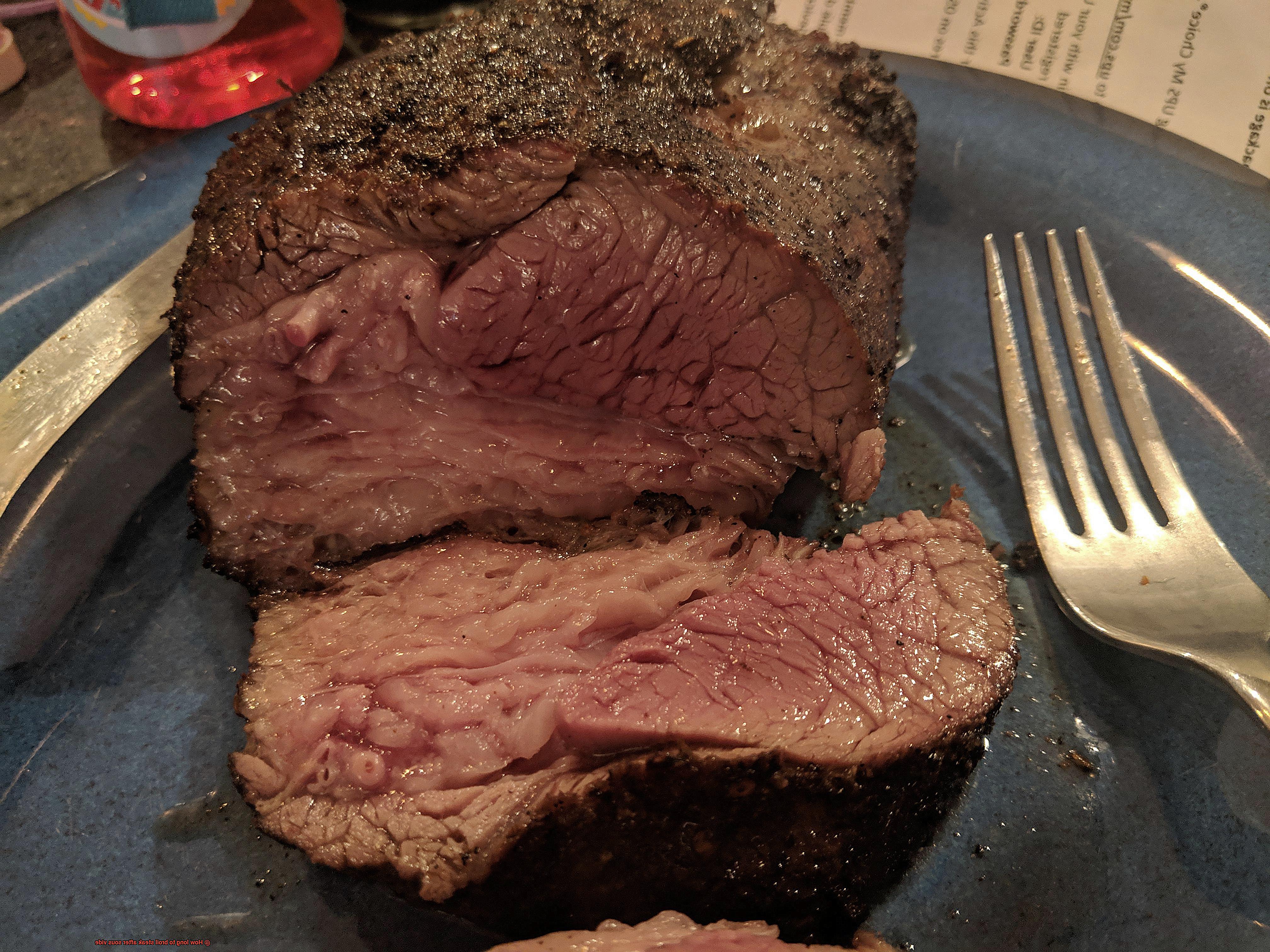
The key thing to keep in mind is that your steak has already been cooked to perfection through the sous vide process. So, when it comes to broiling, less is more. The goal is to add some color and texture to your already delicious steak.
Typically, a broiling time of 1-2 minutes per side will do the trick in achieving a crispy and caramelized exterior. However, you may need to adjust this depending on the thickness of your steak and the strength of your broiler. For thicker cuts of meat, you may need to increase the broiling time to ensure a perfectly browned exterior while keeping the interior warm.
It’s important to closely monitor your steak during the broiling process to prevent overcooking or burning. One nifty tip is to use a meat thermometer to check the internal temperature of your steak as it broils. Once it reaches your desired level of doneness, remove it from the heat immediately.
In summary, remember to keep your broiling time brief and watch your steak like a hawk. With a bit of practice and experimentation, you’ll soon discover the perfect broiling time for your specific cut of steak and personal taste preferences.
Tips for Perfectly Seared Steak
There’s nothing quite like a perfectly seared steak, with a golden brown crust and juicy pink center. But achieving that ideal sear can be tricky, especially if you’re cooking sous vide. Fear not, we’ve got six tips to help you achieve the perfect sear every time.
Dry it off
Before searing, make sure your steak is completely dry. Any excess moisture on the surface of the meat will prevent it from developing that coveted crust. Use paper towels to pat it down and remove any lingering moisture.
Use the right oil
Choose an oil with a high smoke point, such as canola or grapeseed oil. This will help prevent burning and ensure your steak’s flavor isn’t overpowered by the oil.
Heat things up
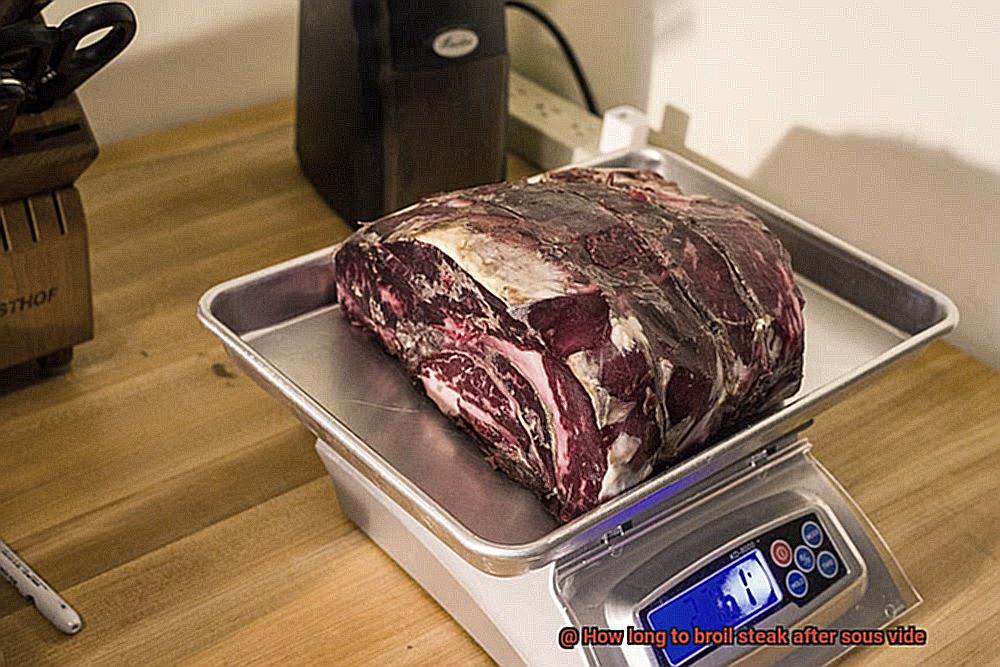
Preheat your pan or grill to high heat before adding your steak. A hot surface will ensure that your steak cooks quickly and develops a beautiful crust without overcooking the inside.
Don’t fidget
Once your steak is in the pan, don’t move it around too much. Allow it to cook undisturbed for a few minutes on each side before flipping.
Check the temperature
Use a meat thermometer to check the internal temperature of your steak, aiming for 130-135°F for medium-rare. This will help you avoid overcooking or undercooking your steak.
Resting is key
Finally, let your steak rest for at least 5 minutes before slicing into it. This allows the juices to redistribute throughout the meat, resulting in a more tender and juicy final product.
Monitoring the Broiling Process
Firstly, it’s crucial to keep a close eye on your steak during the broiling process as it can go from perfectly charred to burnt in a matter of seconds. One way to monitor the broiling process is by using an instant-read thermometer.
This handy tool allows you to check the internal temperature of the steak without having to cut into it and risk losing any precious juices. For medium-rare, aim for an internal temperature of 130-135°F, while medium should be between 135-145°F.
However, not everyone may have an instant-read thermometer on hand. No worries. You can also rely on visual cues to monitor the broiling process.
Look for that beautiful golden-brown crust on the outside of the steak – that’s a good sign. But if you start seeing smoke or flames, it’s time to take action. Consider moving the steak further away from the broiler or reducing the heat to avoid overcooking and ruining your meal.
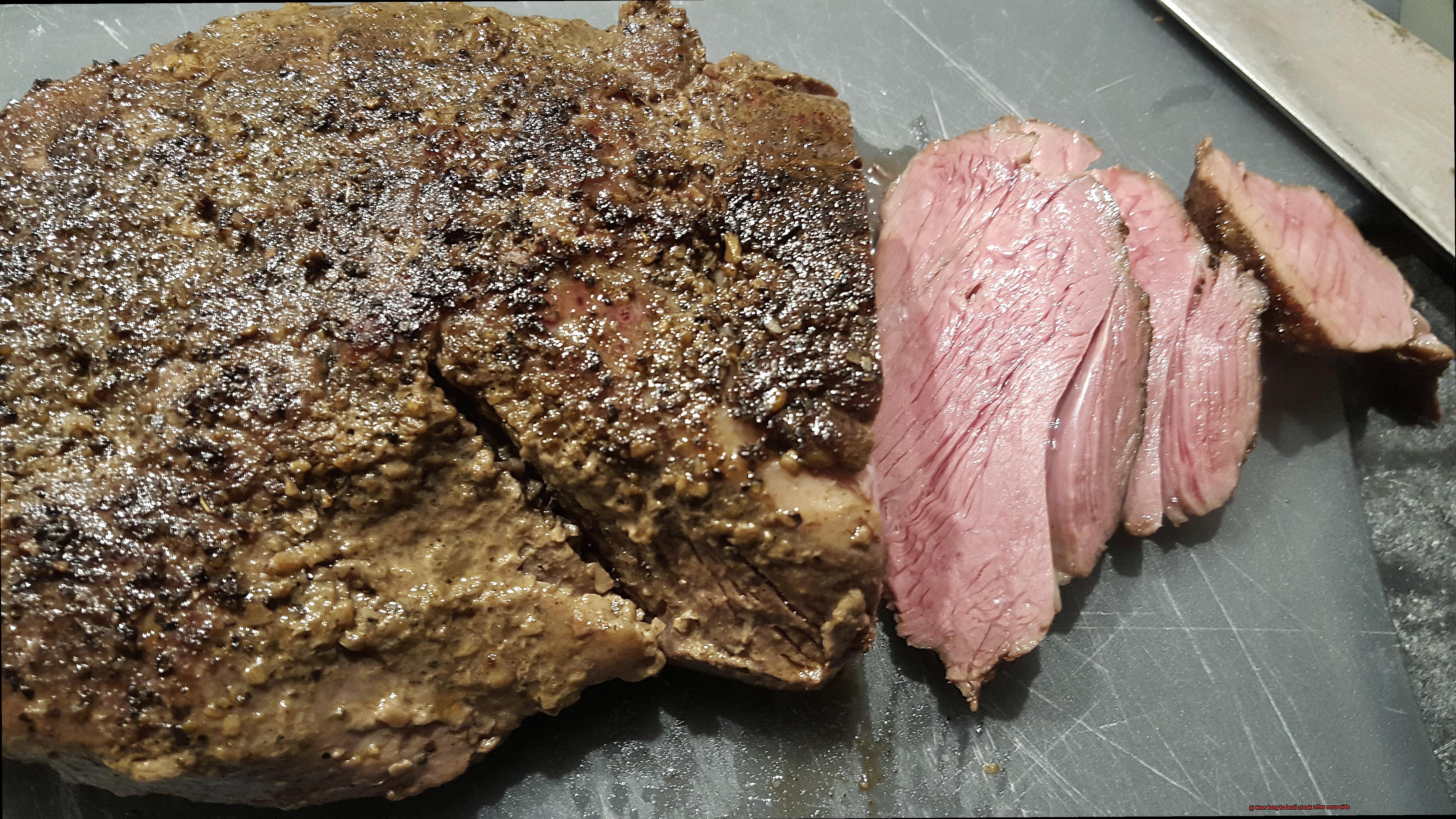
Once your steak is perfectly broiled, resist the temptation to slice right into it. Instead, let it rest for a few minutes before serving. This allows the juices to redistribute throughout the meat and results in a more flavorful and tender steak.
To keep your steak warm during this resting period, tenting it with foil is a great option.
In conclusion, monitoring the broiling process is essential in achieving a perfectly seared steak after sous vide. Whether you use an instant-read thermometer or rely on visual cues, keeping a watchful eye on your steak is crucial.
Overcooking and Toughness Prevention
First, preheat your broiler to the highest temperature possible before placing your steak under it. This ensures that your steak will cook quickly and evenly without drying out, resulting in a succulent and flavorful end product. You want that beautiful charred crust on the outside while keeping the inside moist and tender.
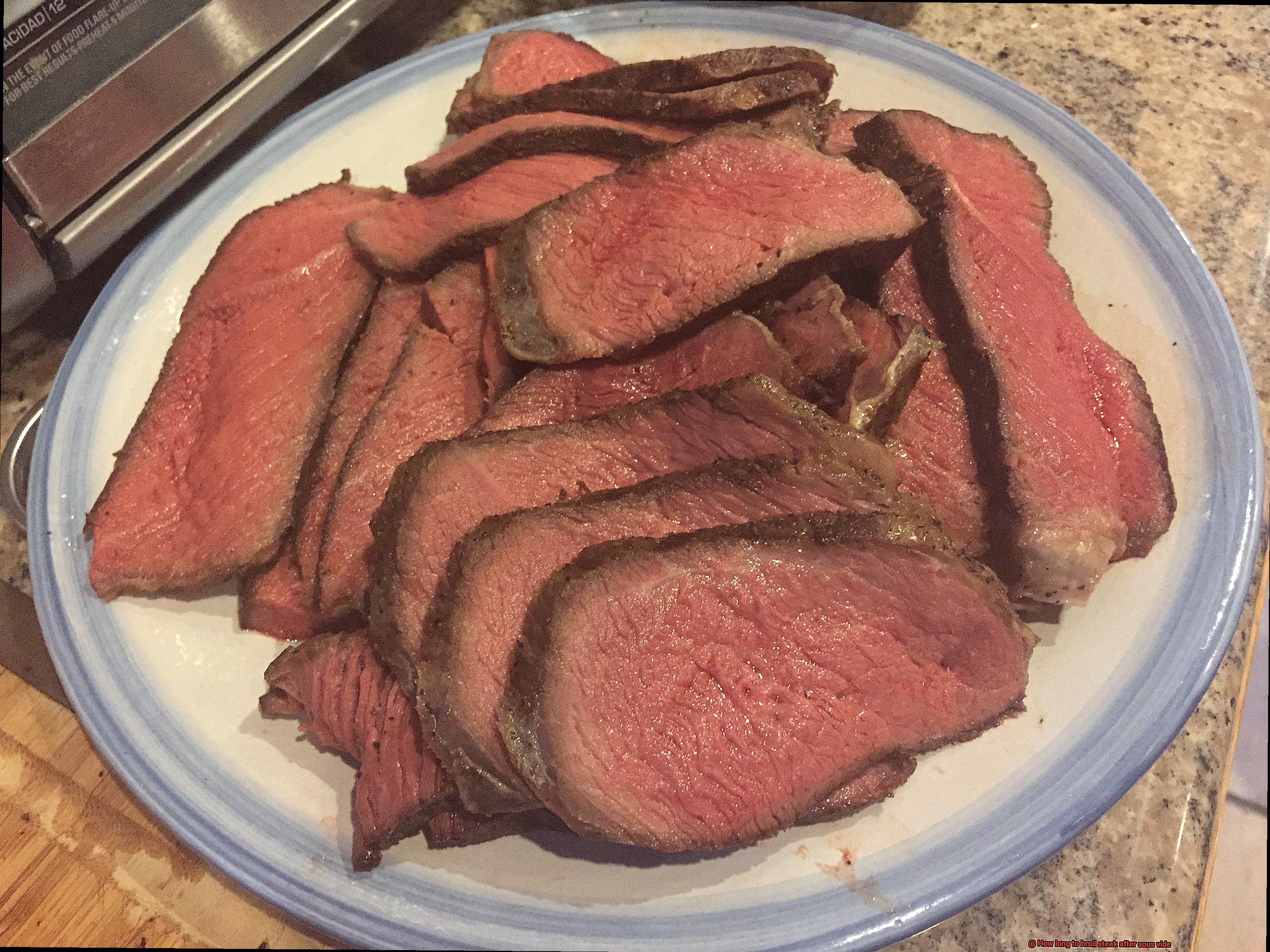
Next, keep a close eye on your steak as it cooks. Depending on the thickness of the cut and the heat of your broiler, it may only need 30-60 seconds per side to develop that mouthwatering crust without overcooking the interior. The key is to watch for that golden-brown color and remove the steak from the broiler as soon as it appears.
But how do you ensure that your steak is cooked to perfection without overcooking it? Consider using a meat thermometer to monitor the internal temperature of your steak as it cooks. For a medium-rare steak, aim for an internal temperature of around 130°F (54°C). Once you reach this temperature, remove the steak from the broiler immediately to prevent overcooking. You don’t want to risk losing all those delicious juices by overcooking the meat.
It’s important to remember that every cut of meat is different and may require slightly different cooking times and temperatures. Don’t be afraid to experiment until you find what works best for you. With these tips in mind, you’ll be able to avoid overcooking and toughness and achieve a perfectly cooked sous vide steak every time.
1_TRxJ802UY” >
Conclusion
In summary, cooking the perfect steak can be a daunting task for many home cooks and chefs. Luckily, sous vide has made it easier to cook steaks to your desired temperature without worrying about over or undercooking. But how do you achieve that coveted sear? Enter broiling.
Broiling is an excellent way to finish off your sous vide steak, but how long should you broil it for? The answer varies depending on factors like the thickness of the steak, its sous vide temperature, and personal preferences for doneness. A general rule of thumb is to broil your steak for 2-3 minutes per side for medium-rare to medium doneness. However, keep a close eye on your steak as cooking times can vary due to altitude and broiler intensity.
To ensure a perfect sear, pat your steak dry with paper towels before broiling it and brush it with a small amount of oil or clarified butter. These simple tips will help you achieve mouth-watering steaks cooked to perfection every time.

